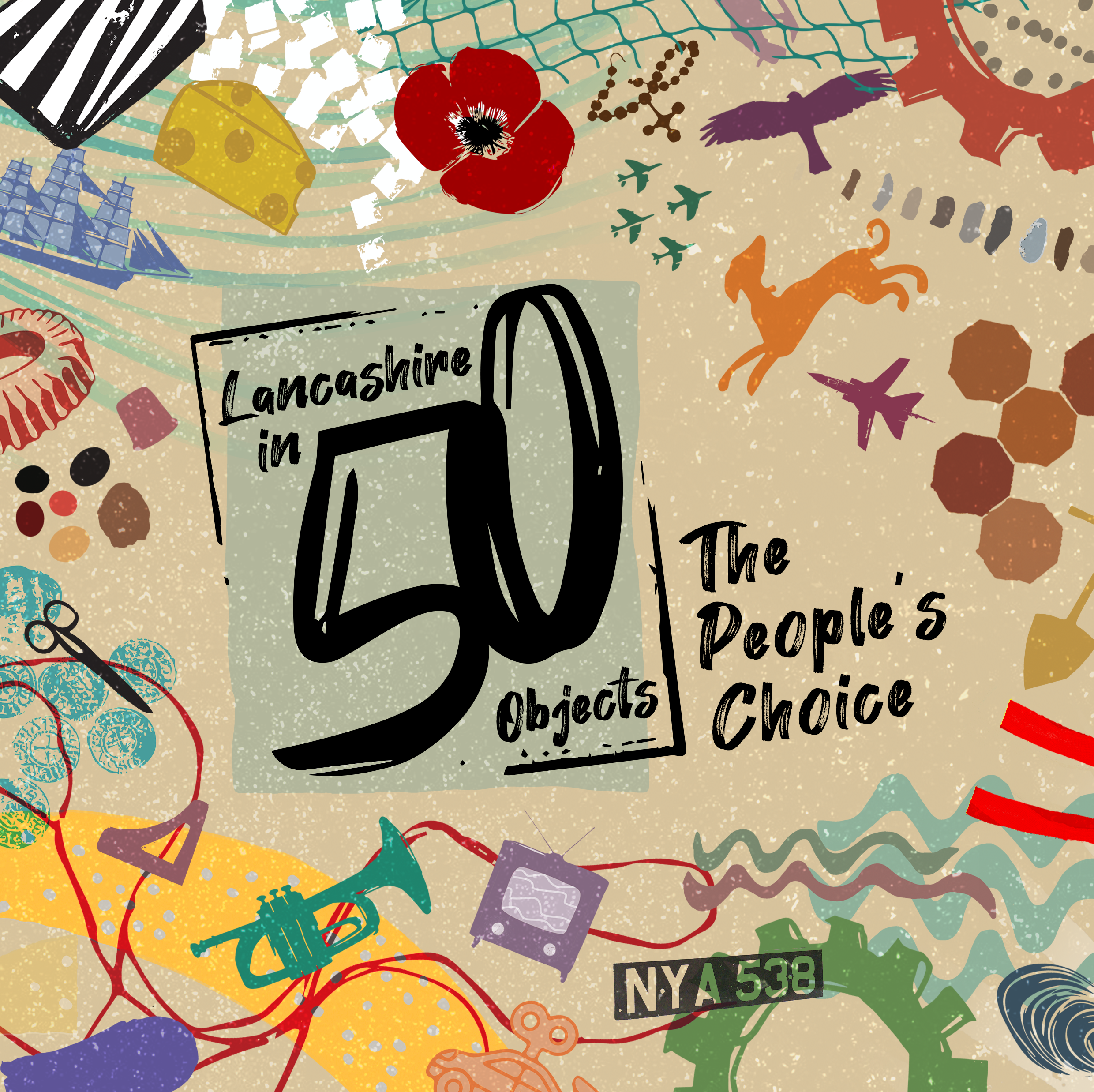
50 objects
The Lancashire County Museum Service was 50 years old in 2024. To celebrate we explored the history of Lancashire, its people, places and traditions through 50 objects in our collections.
Covering 9000 years of history and spanning the geography of the county, we will tell the story of Lancashire's origins including its settlers and invaders, our industries, our military heritage, our food and our famous seaside!
Through the celebration year a new object was published each week on our website and put on display in one of Lancashire's 64 libraries, one of its seven museum sites, or at Lancashire Archives. Now they have been brought together to tell those stories in an exhibition where you will find the prehistoric next to the modern, the artistic next to the utilitarian, and stories of groundbreaking success next to those of failure and despair.
Find out more about the exhibition at Helmshore Mills Textile museum.
50 Objects in Lancashire - The people's choice

The winners of '50 Objects in Lancashire - The people's choice'
In an unexpected twist, '50 Objects in Lancashire - The people's choice' has joint winners. The online vote highlighted the typical view of Lancashire and key historic events and activities, however those who had an opportunity to see the objects in person at the brilliant exhibition at Helmshore Textile Museum were enthralled by the 50 objects and chose three very different items. To respect these differences we''ll be highlighting both sets of winners.
Without further ado, here are the winners of '50 Objects in Lancashire - The people's choice'.
Joint third place
- Witches Charm -These occasionally come to light today in the fabric of buildings under floorboards or built into walls and chimneys. The simple act of hanging a charm over an entrance or window, often accompanied by a written incantation, was seen as a way of warding off evil spirits and preventing them entering.
- South Asian Cot - Known as Manja in Punjabi and Khatia or Charpai in Hindi, this traditional Indian cradle was used by several generations of a family living in Ribbleton, Preston.
Joint second place
- Lancashire Loom - The Lancashire loom patented by Kenworthy & Bullough in 1848 was the culmination of sixty years of development following the first power loom patent taken out by Edmund Cartwright in 1785. It became the standard machine for weaving in Lancashire and versions of the loom were made by every textile machine manufacturer right up to the second world war.
- Bond Minicar - These small three wheeled cars were made at the Sharp’s Commercials workshops on Ribbleton Lane, Preston between 1948 and 1966. Designed by Lawrence (Lawrie) Bond, who had spent the war in the aircraft industry with Blackburn Aircraft Company at Brough, the car captured the mood of post war austerity perfectly.
Joint first place
- Lancashire Clogs - The clog is a sturdy form of footwear made with a wooden sole and a leather upper. The recognisable Lancashire clog became common during the Industrial Revolution on the feet of many workers including those in mills, mines, and factories.
- Fish and Chip Range - Stories of Lancashire often revolve around food, from delights like black pudding and tripe to everyday staples like Lancashire oatcakes. However, one dish stands out as more iconic than any other, good old fish and chips.





